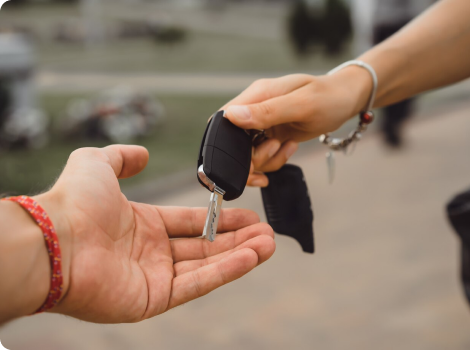Knowing the type of battery your vehicle's key fob requires can help ensure that you have the proper replacement handy when the existing battery fails. However, identifying the correct battery is not always straightforward. This article provides a detailed guide on determining your key fob's battery needs so you face no inconvenience.
Check the make and model of your car.
The make and model of your car provide the first clue regarding the essential fob battery. Vehicles from the same manufacturer usually take similar battery sizes. Note down your car's make, model and year to research common battery needs. Check the owner's manual or online guides for your specific car details. This eliminates guessing and lets you buy a suitable battery in one go.
Examine imprints on the key fob case
Closely inspect the key fob case for any numeric imprints, typically near where the battery compartment opens. Numbers like CR2025 or CR2032 indicate the battery type as per international standards. CR stands for coin cell, and the next pair of digits refers to the diameter and thickness. Pay attention to small prints, as the numbers are barely noticeable at times. This direct information ensures you get an exact replacement.
Try inserting batteries of common sizes.
If imprints are absent, start checking for fit by trial and error with the most commonly used key fob battery sizes: CR2025, CR2032, CR1616 and CR1620. Insert batteries one by one to see which fits snugly into the compartment without any gaps. The fitting one provides the correct size. Keep a multipack of regular batteries handy to immediately identify the suitable type via simple checks without running around shops.
Contact your car dealer for confirmation.
In case previous methods fail, get in touch with your car's dealer for confirmation. Provide your vehicle details, and they can precisely check manufacturer specifications to relay the appropriate battery type. Multinational dealers often maintain extensive part databases. Ask them to double-check if required. Dealer assistance ensures you arrive at the right solution. without any room for doubt. Have the details for replacement saved to future-proof your knowledge.
Consider size, fitting and lifespan.
Once multiple options are shortlisted, assess them based on size, fit and average lifespan. CR2025 is most common, but CR2032 often lasts 50% longer on a single charge. Check millimeters to ensure fit in the compartment. Lifespan varies with use, but higher mAh (milliamp-hours) capacity offers better value. Balance these factors as per your needs to select an ideal, long-lasting solution suitable for your key fob and usage requirements.
Replace batteries periodically.
Just because the fob still 'works' does not mean the battery has not declined. Replace batteries at least once every six to eight months for consistent performance. Old batteries lose charge faster and the fob range may reduce over time. Set calendar reminders to swap batteries before any issues arise during urgent vehicle access needs. Keep fresh backups ready. Periodic timely replacements help fobs function optimally and spare you hassles through sudden disconnections in future.
Store replacement batteries correctly.
Store replacement key fob batteries properly to maintain their charge capacity till installation. Keep them in their original sealed packaging away from extreme hot or cold conditions. Excessive temperatures can deplete the charge even without use. Avoid leaving batteries loosely in drawers or bags where they may accidentally power on when jostled with other items. Protected storage well within the expiry date ensures replacements are as effective as new on installation day.
Consider rechargeable options for better sustainability.
While conventional batteries suffice, consider rechargeable options for higher sustainability. Modern lithium-ion rechargeables like CR2032-rechargeable batteries offer 500-1000 recharge cycles over their lifespan. Recharging is easier than frequent replacements. Check compatibility with your fob but these minimize battery waste. The small upfront cost offsets long-term savings from not buying disposable cells repeatedly. Rechargeables are easier on the environment too by reducing battery disposal quantities.
Program replacement batteries for seamless use.
New batteries may need to be programmed to pair with the fob for vehicle access. Consult the owner's manual or dealership for programming steps. Most involve pressing lock/unlock buttons in a specific sequence with keys inserted to sync. Not programming negates the replacement purpose, so understand pairing needs. Some even need a dealer tool for activation. Sparing a few minutes pays off instead of a wasted new battery purchase.
Conclusion
With car ownership comes the inevitable need to manage key fob batteries. By assessing your fob and vehicle make and model closely, talking to dealers, comparing battery options and periodically replacing used cells, you can always be prepared with compatible charged replacements. Staying informed on your key fob's needs prevents replacement hassles and ensures convenient vehicle access.










